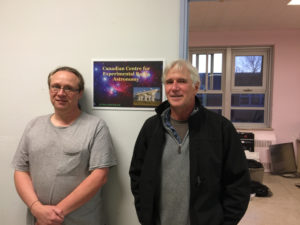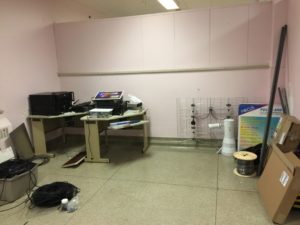Pulsar antenna mounts built, and antenna test-fit
Finished building the two “stands” for the pulsar antenna, which is a stack of garden-variety 4-bay HDTV antennae. This arrangement will give ushttps://en.wikipedia.org/wiki/Right_ascension an asymmetric beam, with a roughly 2:1 ratio, with the declination axis having a narrower angle than the right-ascension axis, somewhat like an ellipse.

This asymmetry will allow us to “see” the target pulsar for long enough to integrate the pulses synchronously for an extended period, without having to move the antenna at all. This lowers telescope complexity enormously, but compromises on sensitivity. We may add a 2nd “stack” of 3 4-bay antenna if this proves to be insufficiently sensitive.











